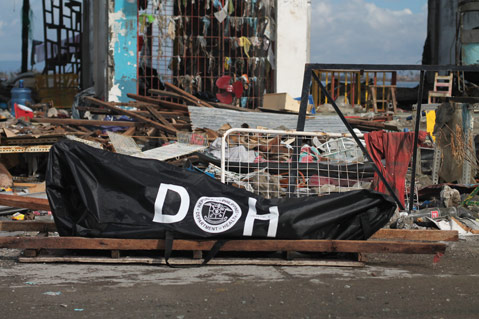The Hell of Typhoon Haiyan
Santa Barbara Journalist Reports on Disaster from Philippines
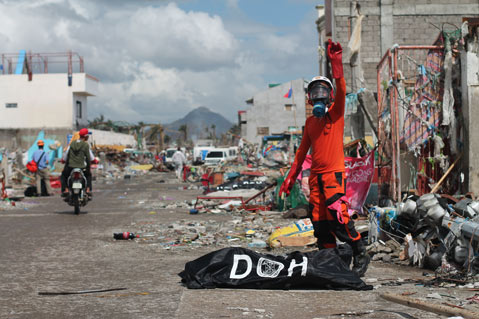
After spending the better part of a year as The Santa Barbara Independent’s listings editor, Jack Crosbie left the paper to embark on a career as an international correspondent. His first stop was the Republic of the Philippines, where Crosbie joined Santa Barbara’s Vitamin Angels on one of their nutrition distribution missions. The country had just experienced a savage earthquake, and days after Crosbie and Vitamin Angels brought some relief to Tacloban, the city was devastated by a typhoon of global headline–grabbing proportions. Here is Crosbie’s firsthand report on that city and country, filed from Manila.
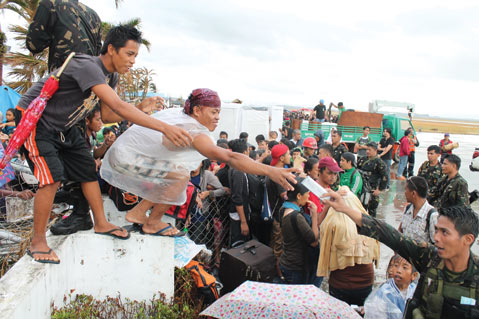
At around seven in the morning on November 8, Super-Typhoon Haiyan crashed into the shores of Eastern Samar province in the Philippines, making landfall almost directly over the city of Guiuan. After chewing through Samar, Haiyan — known as “Yolanda” in the Philippines — tore into the neighboring island of Leyte, again scoring a direct hit, this time on the city of Tacloban, a major transportation hub and population center in the Visayas region of the country.
At its peak, Haiyan was a 370-mile-wide cyclone of fiendish winds that reached gusts of 235 miles per hour and sustained at just shy of 200 miles per hour. Storm surges brought water 17 feet straight up buildings, flooding the ground level of almost every structure in the affected coastal areas.
If you’ve been anywhere near a television in the past two weeks, you probably know much of this and have heard that the number of confirmed deaths, which just broke 4,000, is expected to climb into five digits. At least 9.8 million people have been affected, but maybe more than 13 million, depending on whom you believe. Haiyan is playing out like most disasters in the modern news era, the dead and the wounded and the missing being racked up as nameless digits on the scrolling tickers of major networks. On the ground inside Tacloban’s sports stadium, the whiteboards at the United Nations impromptu headquarters are covered in hastily erased and re-scribbled figures, as new projections and assessments come in.
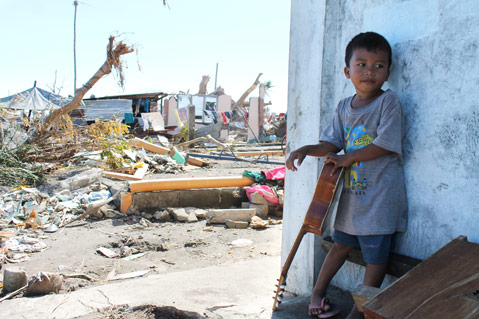
The thing about statistics is that when you turn off the TV or shut down your laptop, they disappear. You may remember them, but unless they’re shoved in your face by the next broadcaster to come on, they fade. What I found, during the five days I spent on the ground in and around Tacloban City, was that they also fade when you walk away from the whiteboards.
Away from the statistics, you learn that the storm surge wasn’t 17 feet; it was up one story and onto the second floor, when, as Noel Ladrera told me, he had to jump down from outside his nearly flattened house. You learn that the 17 feet wasn’t 17 feet in some places, but that the sea came in and went out three times, claiming more lives each time as people tried to flee. Bodies hung from ceiling supports, and families clustered together in whoever’s house had the best concrete. You learn that it wasn’t the wind or the rain or the ocean that did the most damage, but the wind and the rain and the ocean combined and multiplied to create a perfect storm.
As Matthew Cochrane, press officer for the United Nations team in Tacloban, put it, “The disaster was on a scale that this country had never experienced … We know we need to be doing more; we know we need to be doing better; we know we need to be going faster.” The Filipinos I met entirely agreed: Though they usually see several typhoons a year, Yolanda is the worst they’ve seen.
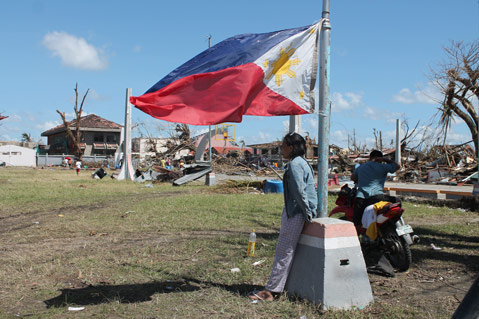
In Tacloban, the media’s chosen poster city for this disaster, the early days were particularly horrific. Yolanda managed to thrash the region’s infrastructure so thoroughly that early relief operations fell flat in the face of a brutalized city trying to cling to its last shreds of life. Flooding and wind-blown debris blocked roads, cell towers, and buildings, spoiling existing food supplies and knocking out water, power, and Internet lines. The airport was crippled, and for the first two days of relief operations, the Philippine Air Force could only get in two C-130 transports of personnel and aid per day. A not-insignificant number of prisoners escaped from the structurally weakened and understaffed Tacloban City Jail, and roads choked with heavy debris kept trucks with relief goods from entering the city.
For many, this is when the real fear began. Michael King, an American ex-pat who’s called Tacloban home for the past four years, showed up on a U.S. Marine Corps flight on Wednesday afternoon carrying everything he owned: a laptop, umbrella, and the clothes he was wearing. “I wasn’t really frightened of the storm when it came up under doors,” King said. “What got to me is the thought that in a few days I could run out of drinking water.” As he walked out of the terminal, he said, “I just left hell, and it’s going to get worse.”
The day after talking to King, I was on a flight to Tacloban — and not for the first time. Two weeks before the storm, I flew into Tacloban on a Cebu Pacific Airbus with a team from Santa Barbara’s own Vitamin Angels. As the wing dipped over the city, a squall of heavy rain, which is common in the region, had just passed, and the aluminum roofs of the city’s houses and shops were a muddy red blur of wet rust, punctuated by scattered fields and stringy palm trees, broken up by blocks of taller concrete buildings. It wasn’t exactly a picturesque city — there were no soaring skylines, no buildings rising higher than a handful of stories — but it was undoubtedly a city teeming with life, color, and noise.
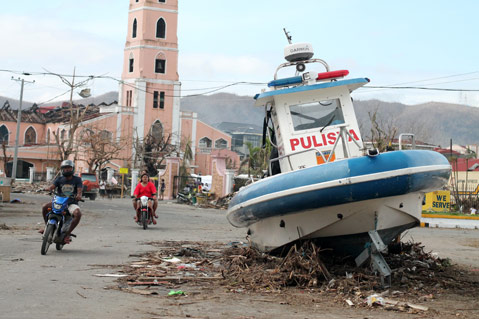
When I arrived on Thursday, the city was unrecognizable. It was a ghost town, with barely any residents moving around and piles of rubble covering the sides of the roads. Though the roads were clear coming in, there were few vehicles on the streets, and most residents clung to whatever shelter they had to stay out of the sun. The worst of the desperate search for food and water — highlighted in the media by reports of widespread looting and other crimes — was over, stamped out by the Philippine National Police and military.
I camped on the roof of the mostly intact Asia Stars Hotel with Empact Northwest, an urban search-and-rescue team from Seattle, Washington. Over the following five days, I followed Empact’s six-person team of EMTs and firefighters through some of the city and region’s hardest-hit areas as they searched buildings and rubble piles for bodies forgotten by or inaccessible to the government’s first crews.
I returned to the hotel each night and saw slight layers of the typhoon’s miasma lift every time. I watched the city come back to life — in an organized, refereed basketball game breaking out in a court across from the UN complex, in a barber offering haircuts in the street — but sorties further and further from the city center were a daily reminder of the unthinkable loss of life and livelihood already suffered, and the monumental amount of work to come.
